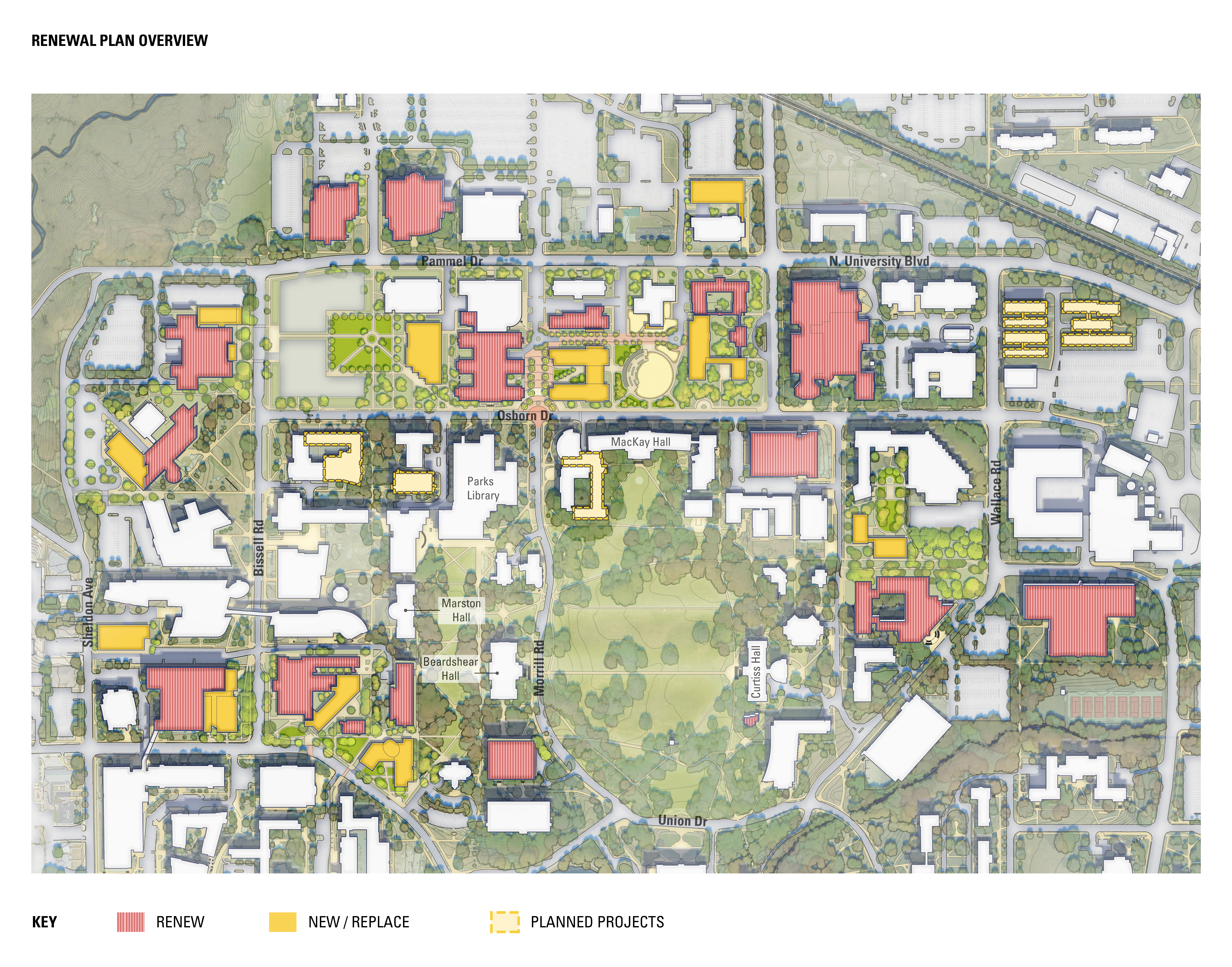New facilities plan outlines 30 years of renewing in-demand spaces
Author: Anne Krapfl
This is an archived story. The content, links and information may have changed since the publication date.
Author: Anne Krapfl

This central campus map illustrates many of the proposed building renovations and new construction over the 30 years of Iowa State's new strategic facilities plan. Image courtesy of facilities planning and management.
Larger image
The same June day it approved Iowa State's nine-year strategic plan, the state Board of Regents signed off on a 30-year strategic facilities plan for the university. The plan is a blueprint for investing in campus buildings to offer modern, functional spaces for student learning and research success. It emphasizes renovation when possible -- and demolition/replacement when not -- and sequences numerous projects that will impact more than 40 buildings.
Over three decades, the facilities plan would modernize or replace 48% of general fund space on campus, roughly 2.3 million square feet. More than 10% of that volume is tied to projects already planned, for example, replacing LeBaron Hall and departmental research greenhouses at Wallace Road and University Boulevard, and two phases of a new veterinary diagnostic laboratory.
Campus planner Chris Strawhacker, facilities planning and management, who led the team that developed the plan, said two other goals of the strategic facilities plan are to:
Strawhacker said an assessment completed early in the planning process that stacked space needs against existing inventory determined the total amount of space on campus is about right. However, ISU needs more teaching and research space and less administrative and office space. Student support and general support space (within the general fund umbrella) is about right, it found.
To implement the strategic facilities plan, Iowa State will need to invest $40 million to $45 million per year for the 30-year life of the plan, according to Paul Fuligni, assistant vice president for facilities planning and management and a member of the strategic facilities plan team. That's not as unlikely as it might sound. For the past 10 years, on renewal projects like Marston Hall or new facilities such as Elings, Troxel, Advanced Teaching and Research Building and the Student Innovation Center, Iowa State has invested about $60 million per year in general fund facilities.
"This university has sustained this level of capital spending for years," Fuligni said.
The strategic facilities plan contains four focus areas, and projects from the four may occur simultaneously. The central campus map (above) illustrates many of the proposals in these four plans:
The plan provides a framework for reinvesting in facilities. Additional planning, design and approvals will be required to implement the projects proposed in each focus area.